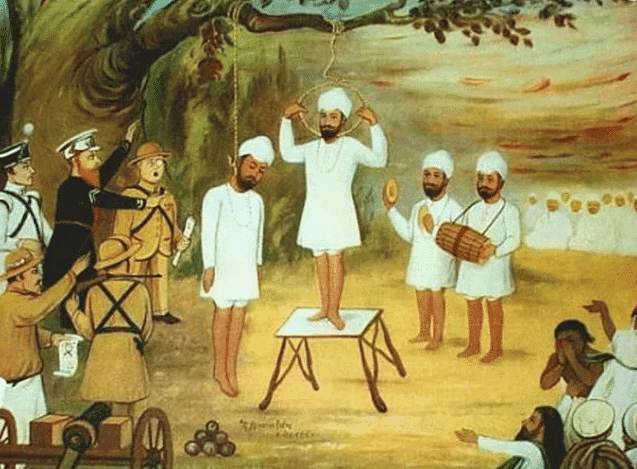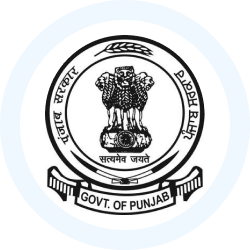PPSC PCS (Punjab) Exam > PPSC PCS (Punjab) Notes > Punjab State (PPSC) PSC: Preparation > Namdhari or Kuka Movement
Namdhari or Kuka Movement | Punjab State (PPSC) PSC: Preparation - PPSC PCS (Punjab) PDF Download
| Table of contents |

|
| Introduction |

|
| Baba Ram Singh's Contributions |

|
| Singh Sabha Movement |

|
| Arya Samaj Movement |

|
| Brahmo Samaj Movement |

|
Introduction
- Founder: The movement was founded by Baba Balak Singh, who lived in the village of Hazro in the North-Western Frontier region of Punjab. He emphasized the repetition of God’s name and rejected religious rituals.
- Followers: Initially called Jagiasis by Baba Balak Singh, the followers later became known as ‘Namdharis.’
- Leadership Transition: After Baba Balak Singh’s death, his disciple Baba Ram Singh, a former soldier in Ranjit Singh’s army, took over the leadership. The movement became known as the Kuka Movement.

Baba Ram Singh's Contributions
- Return to Bhaini: Baba Ram Singh returned to Bhaini in 1855 and began attracting people with his simple lifestyle and religious teachings.
- Formal Inauguration: He officially launched the Namdhari Movement on April 1, 1857, instituting rituals inspired by Guru Gobind Singh’s Khalsa founding.
- Community Rules: Baba Ram Singh established a set of rules for Namdharis, promoting ethical, personal, social, hygienic, and political guidelines.
Main Objectives of the Kuka Movement:
- Worship Practices: The Namdharis rejected the worship of gods, goddesses, idols, graves, and tombs, as well as rituals performed by Brahmin priests.
- Authority: They rejected the authority of hereditary custodians of Sikh Gurdwaras.
- Gender Equality: The movement promoted gender equality, allowing widowed women to remarry.
- Prohibitions: Namdharis were prohibited from drinking, using intoxicating drugs, stealing, committing adultery, and lying. Beef consumption was strictly forbidden.
- Cattle Protection: Protecting cattle was a core value of the Namdharis.
- Political Freedom: Baba Ram Singh linked political freedom to religion and adopted a Non-cooperation policy against the British.
Early Spread and Resistance:
- Expansion: The movement quickly spread across Punjab, gaining followers in districts like Bathinda.
- Revolutionary Involvement: Members of the Mastana Dal, associated with the Kuka Movement, actively participated in the freedom struggle.
1872 Events:
- Meeting at Bhaini: In January 1872, during Lohri, Kukas gathered at Bhaini and planned to assassinate butchers in Malerkotla, despite Baba Ram Singh’s advice for peace.
- British Retaliation: The British government responded by sending troops to Malerkotla, leading to the arrest and killing of Kukas.
- Baba Ram Singh’s Exile: Baba Ram Singh was exiled to Rangoon as part of the British crackdown.
- Suppression: The Kuka Movement was violently suppressed by the British in 1872.
Singh Sabha Movement
- Origin: The Singh Sabha Movement began in Punjab, with the first Sabha established at Amritsar on October 1, 1873.
- Formation of Lahore Sabha: The Lahore Singh Sabha was formed in November 1879 by Professor Gurmukh Singh and affiliated with the Amritsar Sabha.
- Purpose: The movement aimed to reform Sikhism and address unrest in the Sikh community caused by various factors, including Christian conversions.
- Objectives: To propagate true Sikhism, restore its glory, edit and publish historical and religious texts, promote modern knowledge, and start magazines in Gurmukhi Punjabi.
- Expansion: As the movement gained popularity, more Singh Sabhas were established in different cities, and a central organization was created in Amritsar, later renamed Khalsa Diwan.
- Achievements: The movement led to the foundation of the Sikh Educational Society, legalization of Sikh marriages through the Anand Marriage Act, removal of idols from Darbar Sahib, establishment of a common code of conduct for Sikhs, and publication of numerous books and magazines.
- Impact: The Singh Sabha Movement had a lasting effect on Sikhism by eliminating religious diversity within the faith.
Arya Samaj Movement
- Establishment: The Arya Samaj was founded by Dayananda Saraswati in 1875 in Bombay.
- Spread to Punjab: Dayananda Saraswati opened a branch of the Arya Samaj in Lahore in 1877, promoting pride in Indian culture and civilization.
- Influence on Patriots: The Arya Samaj produced several prominent patriots in Punjab, including Lala Lajpat Rai, Sardar Ajit Singh, Shradhanand, Bhai Parmanand, and Lala Hardayal.
- Support for Freedom Fighters: Arya Samajis supported freedom fighters and their newspapers played a crucial role in the freedom movement.
- Government Surveillance: Due to their political activities, the British government closely monitored Arya Samajis in Punjab.
Brahmo Samaj Movement
- Founder: The Brahmo Samaj was established by Raja Rammohan Roy in 1828.
- Branch in Punjab: The first branch of the Brahmo Samaj in Punjab was opened at Lahore in 1861 by Pandit Nobin Chandra Roy.
- Beliefs: The Brahmo Samaj does not discriminate based on caste, creed, or religion and worships Brahman, the highest reality.
- Brahma: Brahma is considered the Unsearchable Eternal, Immutable Being who is the Author and Preserver of the Universe.
- Expansion in Punjab: Many branches of the Brahmo Samaj were established in Punjab, including Ouetta, Rawalpindi, and Amritsar.
- Inspiration: The Brahmo Dharma inspired a significant number of people in Punjab.
The document Namdhari or Kuka Movement | Punjab State (PPSC) PSC: Preparation - PPSC PCS (Punjab) is a part of the PPSC PCS (Punjab) Course Punjab State (PPSC) PSC: Preparation.
All you need of PPSC PCS (Punjab) at this link: PPSC PCS (Punjab)
|
23 videos|50 docs|47 tests
|
Related Searches















